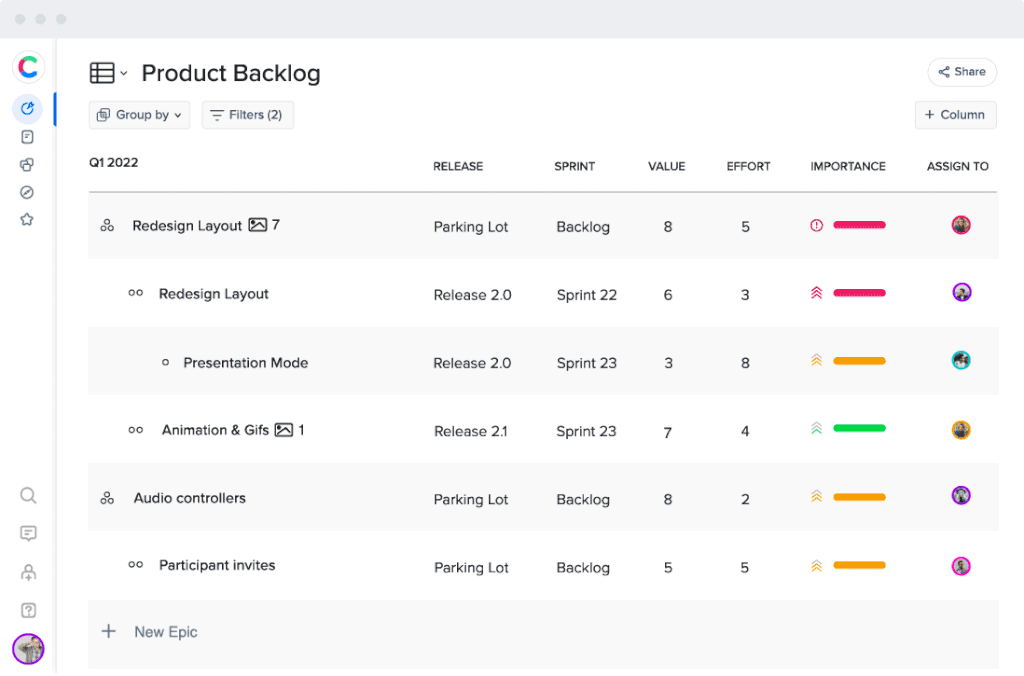Home > Blog > Product Management Trends for 2024
Product Management Trends for 2024

Product Professionals Will Experience Change in 2024
If there’s a single macroeconomic indicator in early 2024 suggesting this year will be more stable than 2023, we haven’t seen it. Economies around the world are struggling. The job market has gone haywire. Plus, the tug-of-war continues between remote workers and employers demanding that they return to the office.
And even though you’re already focusing on those big-picture trends, you still need to keep a watchful eye on the many ways that the product management profession is shifting under your feet. And it certainly is shifting.
With that in mind, here are a few of the trends we here at Craft.io predict will play an increasing role in your work as a Product Executive or Product Manager.
3 Product Management Trends for 2024 and Beyond
1. Cybersecurity will move up your priority list (or at least it should).
Cybercriminals might have had their most successful year to-date in 2023. Government-backed hackers breached rival governments’ most secure networks. T-Mobile admitted that cybercriminals accessed the personal data of 37 million customers. Ransomware attackers locked the UK’s postal service out of its own system, causing “huge financial losses.” And these cyber bad guys didn’t just attack big targets: 73% of US small businesses also got hit in 2023.
Bottom line: If you’re a software product professional, your team is probably going to need to devote more time, resources, and roadmap real estate to fortifying your applications and customer data against these cyber-monsters.
It’s also worth noting that GDPR regulators imposed more fines against businesses in 2023 than they did from 2019 through 2021 combined. As these and other data-privacy laws mature – and their regulators ramp up their audits and investigations – you’ll want to make sure your products are prioritizing cybersecurity.
2. AI will play a growing role both in your team’s work and in your product itself.
Under the category of “least courageous prediction possible,” we’ll also assert that AI will continue becoming an ever-larger part of the product management role.
And that’s not necessarily a bad thing. As we noted in a previous blog, ChatGPT isn’t a threat to product management; if used strategically, it can be an asset both to Product Managers and to their teams’ leaders.
In fact, we see two ways that AI will grow in importance for product professionals like you.
- AI will help streamline your workflows.
As we noted in our ChatGPT blog (link above), smart product professionals will be able to leverage the increasing sophistication of AI’s newest tools – including Large Language Models and Generative AI – to help make their daily tasks quicker and easier. For example, Product Managers can use tools like ChatGPT to help draft user personas and even find data supporting strategic product decisions.
We’d also add now that in 2024, as more SaaS platforms are incorporating AI capabilities into their own tools, we expect you’ll be able to improve other aspects of your product workflows. Figma, for example, is using AI to help product design teams create and iterate their UX/UI designs more quickly. Pretty cool, right?
And on a side note: Figma (like several other design tools) integrates with Craft.io.
- AI will help you increase your product’s value for users.
The other way we see your team using AI is to build functionality into your product or other aspects of your customer’s experience.
AI-powered chatbots and help files, for example, are already helping businesses empower customers to obtain frictionless, immediate answers to their support or business questions.
And as the costs, required technical resources, and other barriers to these AI-driven plug-ins continue to fall (and they’re falling fast), we predict your team will find more and more ways to enhance the value of your product and your user experience using AI.
3. Recurring revenue models will become even more popular.
There are good reasons that businesses in so many industries are now finding ways to introduce subscription-based pricing as options for customers.
Research in Forbes finds estimates the subscription economy will become a $1.5 trillion industry by 2025. It also finds that subscription businesses grow 3.7x faster than the S&P 500.
That’s why businesses you wouldn’t expect this from – clothing sellers, dog-toy makers – are turning their one-sale-at-a-time companies into subscription services, capturing recurring revenue monthly or annually.
And given the tremendous flux our economy has been through and continues to face, we anticipate that if your product team isn’t already doing so, you’ll soon be investigating recurring revenue models for your products and services as well.
Bonus Prediction
One final thought: Given how central a role product management is playing today for organizations today – helping to understand the company’s core customers, for example, and identifying opportunities to solve those customers’ challenges – we also predict that product professionals like you will be looking for workflow solutions to empower your product teams to build great products with confidence.
If that sounds like your situation, we invite you to try the end-to-end enterprise product management platform trusted every day by companies like Kimberly-Clark, Cisco, and Fannie Mae.



